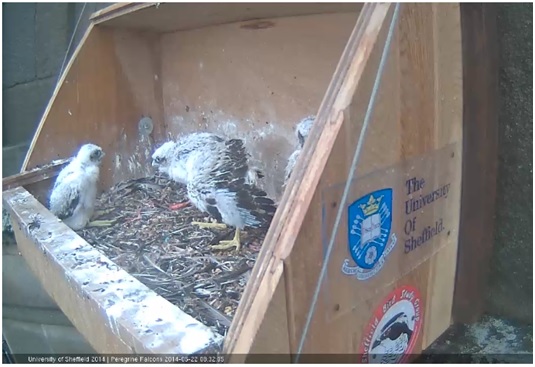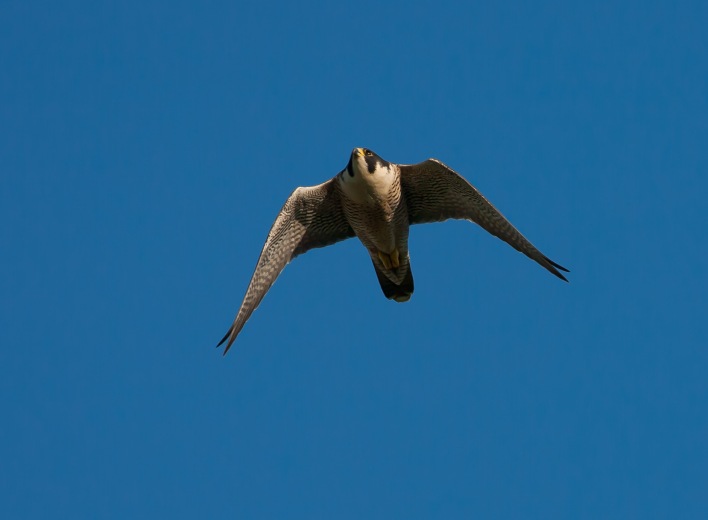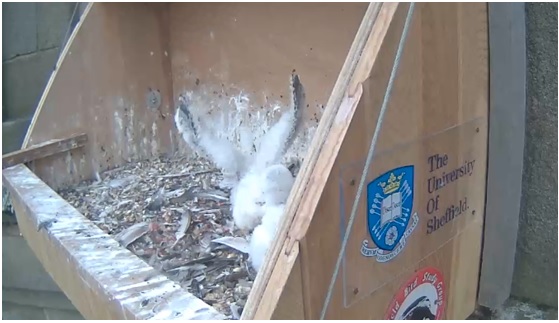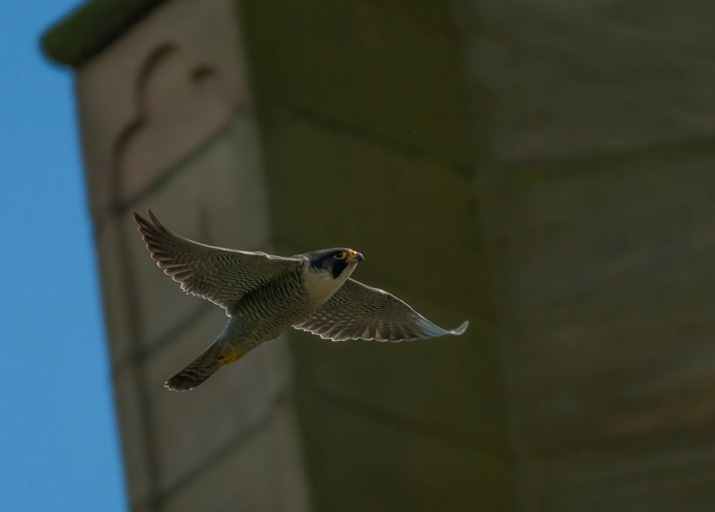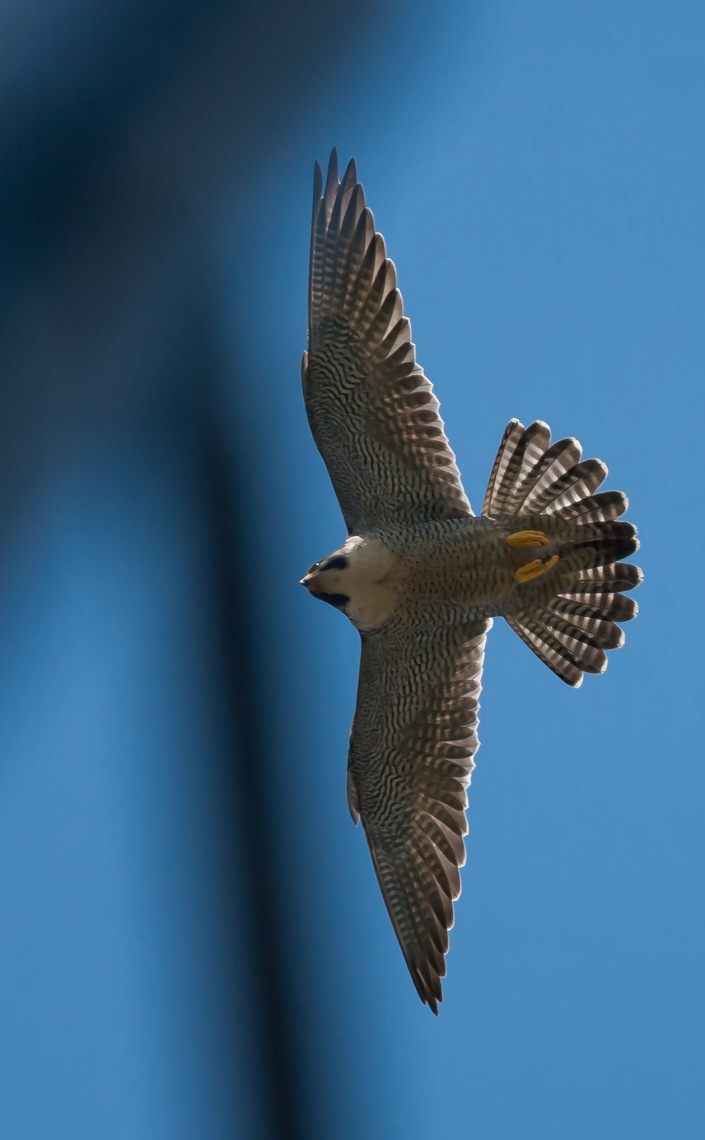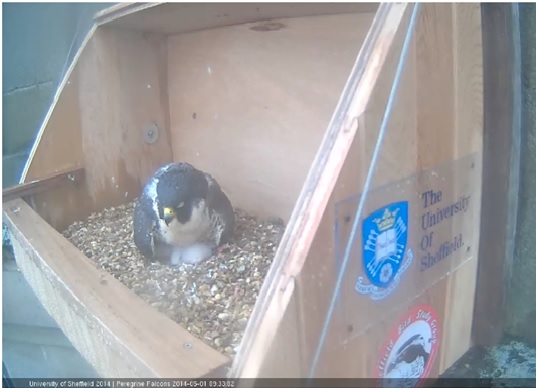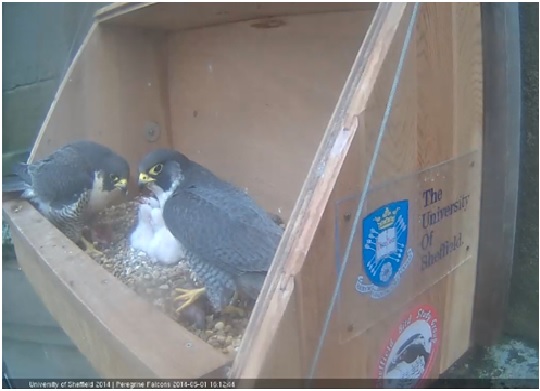It’s hard to believe that it was four weeks ago that the first eggs hatched, and hard to believe too how much the chicks have grown and changed in that time.
They are rapidly losing their downy all-white appearance and the feathers below are more evident every day down to a combination of the chicks preening away the down (as one is above) and the feathers breaking out of their sheathes (the white casing of the tail feathers is just about visible in the bird to the right above). The chicks are also starting to show the powder blue colour of the eye ring and base to the bill, which will become more evident and remain a good identification feature of their immature status for over a year.
The heavy showers – and prolonged rain – of recent days have been challenging and the chicks have looked pretty sorry for themselves at times, huddling together for warmth. The chick to the left below looks smaller than the rest, presumably the same reported as smaller by the ringers, but seems to be doing as well as the others.
On one occasion the female attempted to brood them, presumably in recognition of the very poor conditions, though this is well beyond the normal period for brooding. Needless to say, the amount of shelter she was able to provide to a brood of four well-grown chicks was limited, to say the least!
The bright sunshine this morning was a welcome change and a chance to enjoy some first-hand views of the birds. Not long after I arrived the female brought in a Feral Pigeon, which she prepared on the ledge next to the platform, watched by the chicks, which were often visible from below as they came to the front of the platform.
They are no doubt learning a lot from watching the parents, and as I watched the male take off from the perch it occurred to me that it won’t be long before the chicks are taking their first flight and may be picking up the general sense of what they need to do: they were certainly paying close attention as he flew off.
Something that was evident this morning was that the adults were often perching a little further from the platform that had been the case a week or so ago, although the female did also perch on top of the box. All part of the process of getting them ready to gain their independence. For his part, the male took up a new and rather unexpected vantage point on the arm of the crane, where he landed several times, even carrying some prey there to prepare for the chicks.
This seemed to be opportunism as the cranes weren’t working for the bank holiday and I can’t imagine them being used during the week when they’re constantly moving to and fro. He made a half-hearted drop from there towards a Feral Pigeon that passed underneath, but pulled out before fully engaging in a chase.
Something else I’d noticed on the webcam, but was able better to appreciate in ‘live view’ was the way in which the adults like to have both feet free to take off, preferring to carry food in their beak to lift off and then transfer the prey to their talons once in the air.
The co-ordination involved here, all while taking off from a stone cliff-face, is pretty impressive – the chicks have plenty still to learn!
Best guesstimates suggest that the public talk on 5th June is going to be close to the date of the chicks’ first flight, and in the meantime they will be preening and looking ever more like their parents. Enjoy the views while they last.















